Interactive Tables and Charts
S-Network Space Index vs. Benchmark Indexes, H1 2023
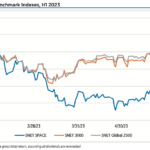
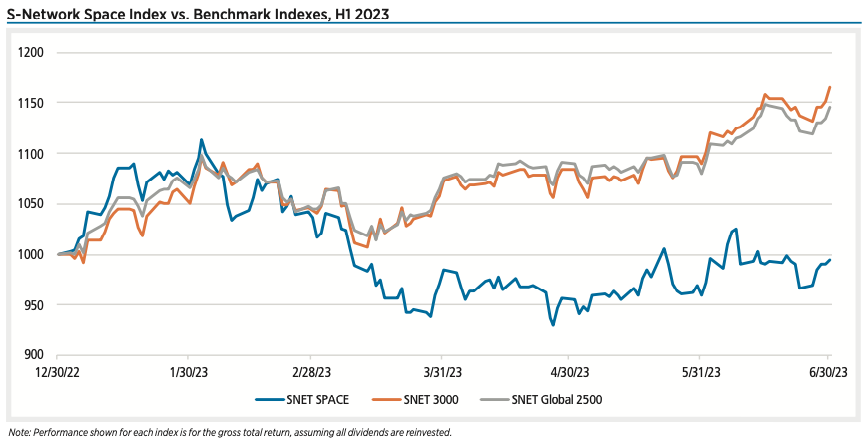
In the first half of 2023, the S-Network Space Index (SNET SPACE) underperformed other benchmark indexes, declining 0.6%. This compares to a 17% increase for the S-Network U.S. Equity 3000 Index (SNET 3000), which tracks the 3,000 largest (by market capitalization) U.S. stocks.
Space Force Tracked Rocket Bodies in Orbit, June 2023
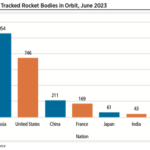
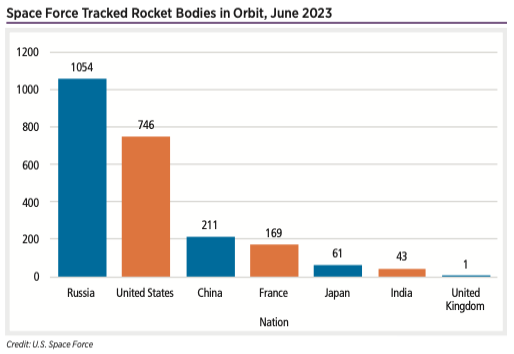
The accidental detonation of a rocket in space caused the biggest debris event of NASA’s early efforts, with a Thor Ablestar upper stage exploding into more than 300 pieces in 1961. The danger of debris dawned on NASA after the explosion.
Space Force Tracked Spacecraft and Debris, June 2023
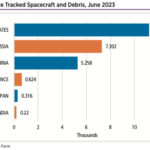
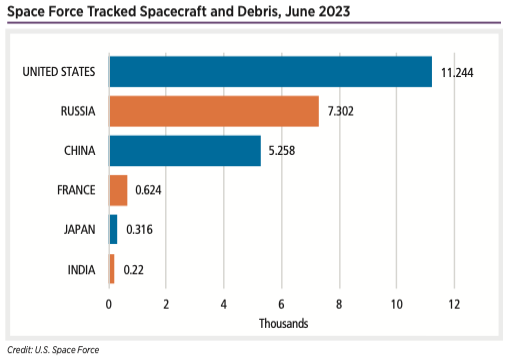
If LEO is the wild West, Victor Gardner, president of the space situational awareness firm LeoLabs Federal, is the new sheriff in town, and he’s packing a global network of radar stations rather than a six-shooter.
Space Force Tracked Debris in Orbit, June 2023
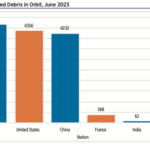
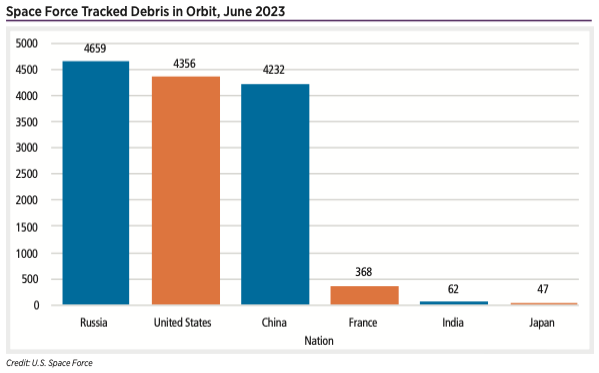
The Russians started it with pieces of Sputnik in 1957. America followed suit, and China is catching up in congesting low Earth orbit with clouds of debris that whiz around the planet at nearly 18,000 mph. Now, as low Earth orbit grows as a destination for massive constellations of satellites to deliver services from weather forecasts to phone calls, along with crewed commercial space stations, nations are racing to ban space-based littering and invent methods to take out the orbiting trash.
Select Launch Vehicles by Thrust
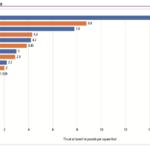
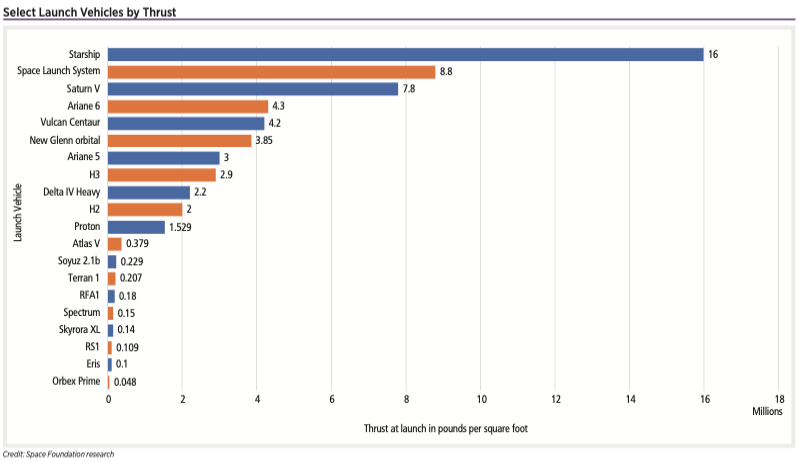
The European Space Agency (ESA), like NASA, is also using high-tech computer models to predict how these much more powerful rockets will behave. Learning on the fly with massive rocket boosters is a costly proposition.
Launches by Nation, 2014-2023
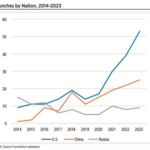
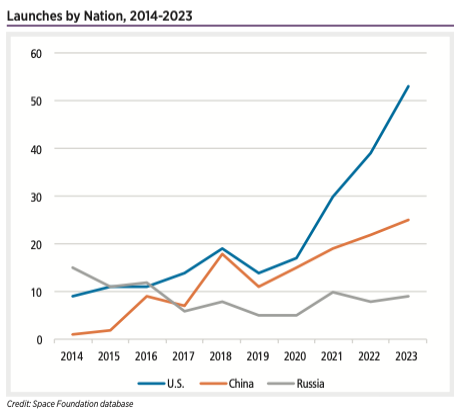
The second half of 2023 began with the launch of the European Space Agency’s Euclid telescope, designed to probe the universe’s dark matter. And several groundbreaking civil space missions remain on tap for the year.
Midyear Launch by Type, 2014-2023
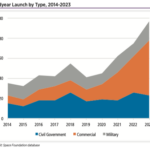
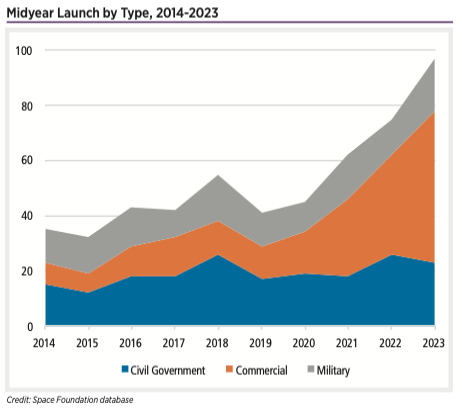
The failures pale in comparison to the successes, with a record 55 commercial launches through the midyear point. The first half of 2023 also set a midyear mark for military launches with 19 worldwide, exceeding the record of 17 set in the first half of 2018. Civil government launches were down slightly, with 23 launches in the first half of 2023, compared to 26 in the first half of 2022.
Midyear Launch Trends, 2014-2023
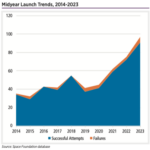
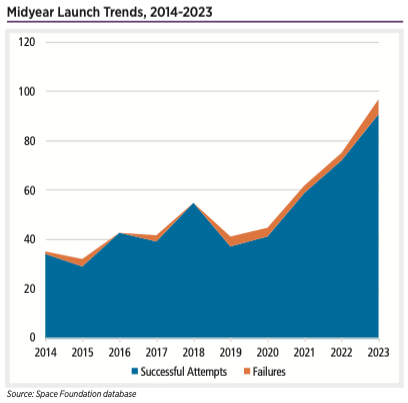
The first half of 2023 saw 97 launches worldwide, setting a record pace despite delays for major rocket programs that pushed the debuts of two major launch vehicles later into the year and notable failures on launch for SpaceX’s Starship in America and Mitsubishi’s H3 in Japan.
Non-NASA U.S. Civil Space Spending by Agency, 2021-2023
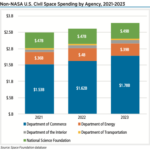
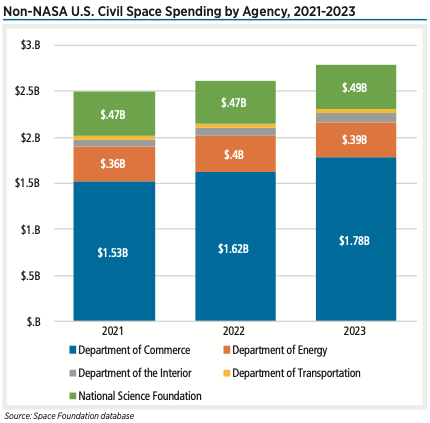
The Department of Defense’s unclassified space spending totaled $17.1 billion in 2022. Space Foundation also estimates total defense space spending, including classified and unclassified budgets for all military branches and intelligence agencies. This estimate reached $42.9 billion last year, a 21% increase year-over-year.
ESA Member Contributions by Type, 2022
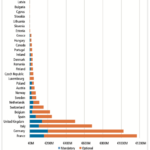
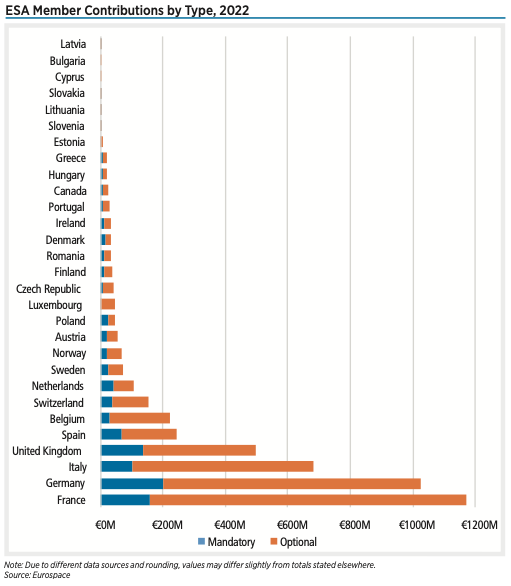
Member state contributions comprised 70% of ESA funding last year. France contributed the most, €1.2 billion. Germany came in second with €1 billion, and Italy was third with €680 million. These top three member states were responsible for 42% of the total budget. The Netherlands increased the amount it sent ESA by 13% in 2022 to just shy of €100 million, while Canada slashed its contribution in half.